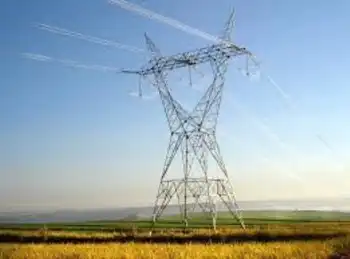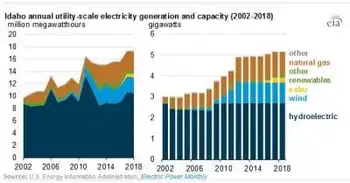Shedding light on imperfect choices
Nobody denies that the use of traditional incandescent lighting is bad for the environment. Incandescent lights heat a filament inside a tube to produce light; and more than 90 per cent of the energy is used to create heat, wasting electricity.
They are so inefficient that several governments plan to ban them in the next several years in an effort to reduce electricity consumption and therefore the greenhouse gas emissions that cause global warming.
For the moment, the main alternative to incandescent bulbs are the much more energy efficient compact fluorescent bulbs, but they come with their own problem: toxic mercury. But environmentalists see new technologies around the corner that would mean clean, energy efficient lighting.
Ontario is the first province in Canada and the first government in North America to ban inefficient lighting - it plans to ban the sale of incandescent bulbs by 2012. Australia had already committed to a ban on incandescent bulbs by 2010; the Canadian government announced a ban on the sale of incandescent light bulbs by 2012.
If all Ontarians stopped using incandescent lights, it would be the equivalent of taking 250,000 cars off the road, according to the provincial environment ministry. To put it another way, if the roughly 87 million incandescent bulbs in Ontario homes were replaced with compact fluorescent lighting (CFL), it could cut electricity demand by six million megawatt hours over the course of a year - enough to power 600,000 households.
The provincial ban will only make it illegal for retailers to sell the bulbs; homeowners and businesses won't be penalized for using them; the federal ban will let people use incandescent lights where energy-efficient alternatives are not available. Even so, the ban will see most consumers move to CFLs, which use 75 per cent less electricity than incandescent lights and also last up to 10 times longer.
Like fluorescent tubes in office complexes, CFLs use a small amount of electricity to excite gas in a tube and produce an invisible ultraviolet light that bounces off a fluorescent coating to produce light. Though CFLs don't illuminate as quickly as incandescent lights and produce less visible light from the same wattage, they produce less heat and save a lot of energy.
Unfortunately, CFLs also contain mercury - a toxic substance that can be hazardous if inhaled and is environmentally unfriendly. If a CFL bulb bursts in an area that is not well ventilated, individuals may inhale mercury. As well, the bulbs should not be tossed in garbage destined for landfills. Instead, they should be disposed of like batteries, says Peter Howard, director of climate change services with Zerofootprint Inc.
Still, having pointed out the down side, Mr. Howard says Zerofootprint is "not declaring them a hazardous substance" as there is "no evidence of them breaking more often than incandescent light bulbs."
As well, in a province such as Alberta, where the largest source of mercury emission emanates from coal-fired plants used to generate electricity, the use of CFLs will reduce overall mercury emissions, he says.
"They are a better solution, not a perfect solution," he says.
Friends of the Earth (FoE) Canada, a charitable, non-profit environmental organization, applauds the Canadian government's ban on incandescent light bulbs. But it wants the government to go even further, says Beatrice Olivastri, FoE's chief executive officer. It wants the government to encourage the development of technologies that are even more environmentally friendly than CFLs, then ban the use of CFLs in favour of new and improved technologies - such as LED lights, which currently do not shed enough light to illuminate rooms.
"Let's send a clear signal so people innovate and compete and bring in the next generation of lights to market," said Ms. Olivastri.
While LED lights, which generally adorn porches during the Christmas holidays, are not yet ready for prime time, they are getting better. For instance, LED clusters that fit conventional light sockets are currently being developed and should soon generate enough light to replace incandescent and CFL bulbs.
"They are the new and promising technology," says Mr. Howard. A high-intensity cluster of LEDs can shed proper light while producing virtually no heat. They last 20 years, have no mercury and can be used with dimmer switches, he adds.
Beyond energy-efficient artificial lighting, architects are starting to design homes and offices that maximize the use of available sunlight - reducing the overall need for artificial light. Some skylights are now being connected to light tunnels, or fibre optic tubes, that can direct light that comes in through the skylight to various rooms in a house - even a hallway or basement.
So while new light bulb technology will reduce overall energy consumption, new architectural design, coupled with technology, will reduce the need for artificial lighting, further reducing energy consumption, says Mr. Howard.
Related News

$1.6 Billion Battery Plant Charges Niagara Region for Electric Vehicle Future
TORONTO - The automotive industry is undergoing a seismic shift, and Canada is firmly planting its flag in the electric vehicle (EV) revolution. A new $1.6 billion battery component plant in Ontario's Niagara Region signifies a significant step towards a cleaner, more sustainable transportation future. This Asahi Kasei facility, a key player in Honda's $15 billion electric vehicle supply chain investment, promises to create jobs, boost the local economy, and solidify Ontario's position as a leader in clean transportation technology.
Honda's ambitious project involves constructing a dedicated battery plant adjacent to their existing Alliston, Ontario assembly facility. This new plant…





